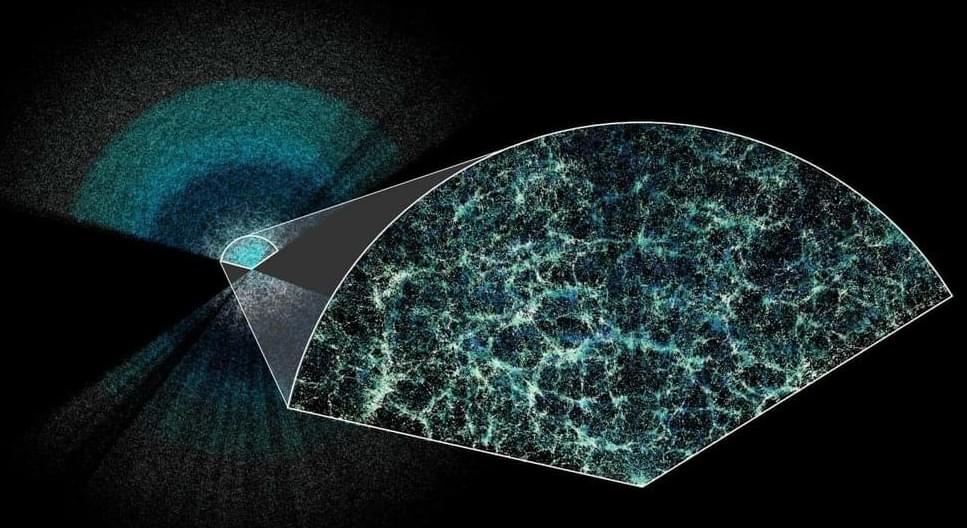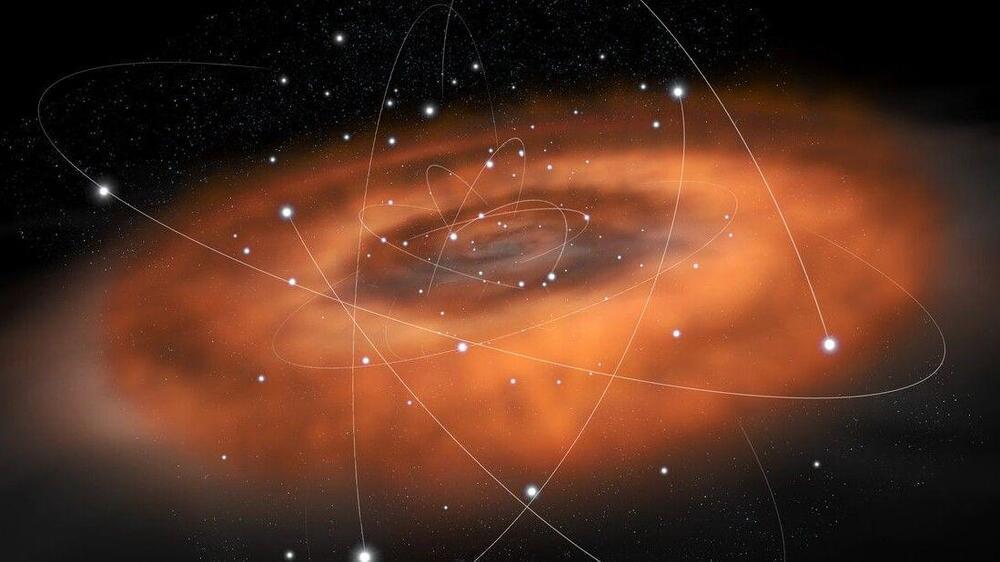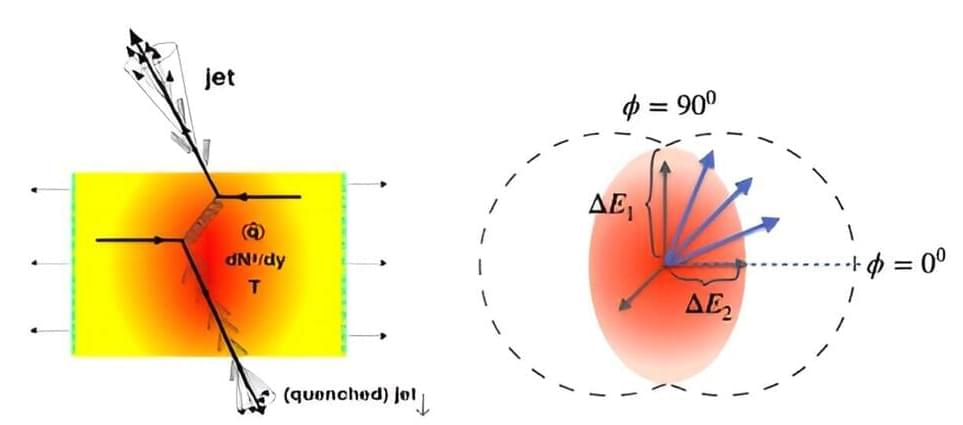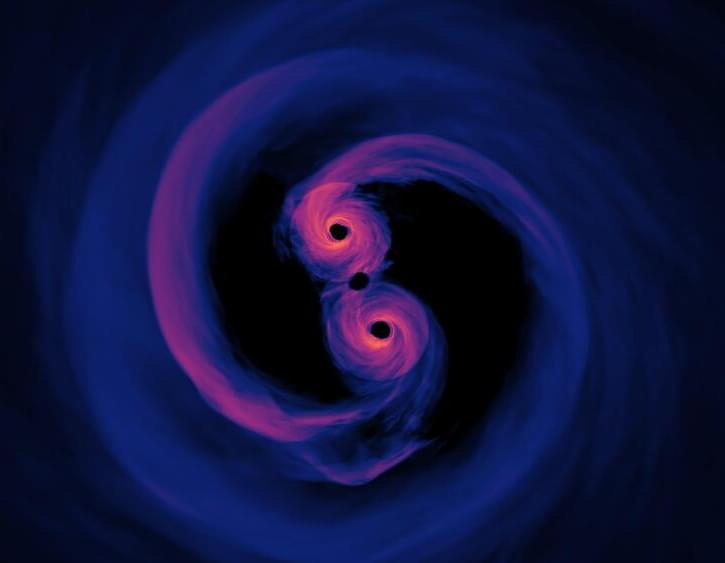The standard model of cosmology says that the strength of dark energy should be constant, but tentative hints are emerging that it may have weakened recently.
By Leah Crane

The standard model of cosmology says that the strength of dark energy should be constant, but tentative hints are emerging that it may have weakened recently.
By Leah Crane



New research has established a reversible framework for quantum entanglement, aligning it with the principles of thermodynamics and paving the way for improved manipulation and understanding of quantum resources.
Bartosz Regula from the RIKEN Center for Quantum Computing and Ludovico Lami from the University of Amsterdam have demonstrated through probabilistic calculations the existence of an “entropy” rule for quantum entanglement. This discovery could enhance our understanding of quantum entanglement, a crucial resource underpinning the potential of future quantum computers. Although quantum entanglement has been a research focus in quantum information science for decades, optimal methods for its effective utilization remain largely unknown.
The second law of thermodynamics, which says that a system can never move to a state with lower “entropy”, or order, is one of the most fundamental laws of nature and lies at the very heart of physics. It is what creates the “arrow of time,” and tells us the remarkable fact that the dynamics of general physical systems, even extremely complex ones such as gases or black holes, are encapsulated by a single function, its “entropy.”

It was discovered just 130 days before exploding using two telescopes in Hawaii, allowing a team of experts to investigate it before it exploded in a massive supernova.
“This is a breakthrough in our understanding of what massive stars do moments before they die,” said Dr. Wynn Jacobson-Galán, the study’s lead author.
What is the nature of quantum physics? Neil deGrasse Tyson and comedian Chuck Nice get quantum, exploring Schrodinger’s Cat, electrons, Hilbert Space, and the biggest ideas in the universe (in the smallest particles) with theoretical physicist Sean Carroll.
When did the idea of fields originate? Are fields even real or are they just mathematically convenient? We explore electrons, whether they are a field, and whether they exist at all. We also discuss the wave function, Hilbert Space, and what quantum mechanics really is. Do superpositions always exist?
What would happen if Planck’s Constant were macroscopic? Learn about entangling particles and the longest entanglement distances. If the particles are entangled why would the distance matter? Could we make an internet with quantum entanglement? We break down Schrodinger’s cat, its interpretations, and what the thought experiment really means. Do superpositions always exist?
Are there quantum manifestations in the macro-universe? We explore the microwave background, inflation, and how we discovered that atoms are mostly empty. Sean gives his latest takes on dark matter, dark energy, emergence, and free will. Plus, is dark energy really the cosmological constant?
Timestamps:
00:00 — Introduction: Sean Carroll.
05:28 — The Origin of Feild Theory.
8:26 — Do Electrons Exist?
11:57 — What Really is Quantum Mechanics?
17:30 — What If the Planck Constant Were Macroscopic?
18;45 — Extending Quantum Entanglement.
25:50 — Schrodinger’s Cat \& The Multiverse.
36:16 — Quantum in the Macro Universe.
42:17 — Thoughts on the Dark Universe.
Check out our second channel, @StarTalkPlus.
The discovery is the best candidate for a class of black holes astronomers have long believed to exist but have never found—intermediate-mass black holes formed in early stages of galaxy evolution.
Visible to the naked eye as a smudge in the night sky from Southern latitudes, Omega Centauri is a magnificent collection of 10 million stars. Viewed through a small telescope, it resembles other globular clusters —a densely packed spherical assembly of stars where the core is so congested that individual stars blur into one another.
However, recent research conducted by teams from the University of Utah and the Max Planck Institute for Astronomy has resolved a long-standing debate among astronomers by confirming that Omega Centauri harbors a central black hole. The black hole appears to be the missing link between its stellar and supermassive kin—stuck in an intermediate stage of evolution, it is considerably less massive than the colossal black holes that are typically found in the centers of galaxies. Omega Centauri seems to be the core of a small, separate galaxy whose evolution was cut short when it was swallowed by the Milky Way.

Dark matter could bring black holes together.
Dark matter that interacts with itself could extract significant momentum from a binary supermassive black hole system, causing the black holes to merge.
A gravitational-wave “hum” pervades the Universe.
Researchers have found a link between some of the largest and smallest objects in the cosmos: supermassive black holes and dark matter particles.
They say that we ultimately lose information once it enters a black hole, but is this really the case? Let’s find out on today’s video. Have you ever wondered what happens to information when it falls into a black hole? Does it get destroyed forever? Does it arrive somewhere else? Does it enter a girl’s bookcase and call it for Murf? Is there a way for it to escape? Today, we’re diving into one of the biggest mysteries in physics: the black hole information paradox. But first, why should we care? Well, in case a black hole suddenly pops up in your bedroom or office table, this paradox sits at the intersection of quantum mechanics and general relativity, the two pillars of modern physics, and solving it could unlock new understandings of the universe itself. So, let’s get started. Our journey begins with looking at the basics of black holes and the paradox that has puzzled scientists for decades.
Like any good explainer, let’s begin with the basics. What exactly is a black hole? In simple terms, a black hole is a region in space where gravity is so strong that nothing, not even light, can escape from it. No Brad, it’s not a challenge; calm down. This happens when a massive star collapses under its own gravity, compressing all its mass into an incredibly small, incredibly dense point known as a singularity. Surrounding the singularity is the event horizon, the boundary beyond which nothing can return. Think of the event horizon as the ultimate point of no return. Once you cross it, you’re inevitably pulled towards the singularity, and there’s no way back. Feel like you know well about black holes? Great. Now let’s talk about Hawking radiation. In the 1970s, Stephen Hawking proposed that black holes aren’t completely black; instead, they emit a type of radiation due to quantum effects near the event horizon. This radiation, aptly named Hawking radiation, suggests that black holes can slowly lose mass and energy over time, eventually evaporating completely. But here’s where things get tricky: Hawking radiation is thermal. By that, we don’t mean that it’s smoking or anything, but that it appears to carry no information about any of the stuff that fell into the black hole. And this brings us to the heart of our mystery: the black hole information paradox. How can the information about the material that formed the black hole and fell into it be preserved if it’s seemingly lost in the radiation? With this foundation in place, I feel that we’re now ready to explore the paradox itself and the various theories proposed to resolve it.
–
DISCUSSIONS \& SOCIAL MEDIA
Commercial Purposes: [email protected].
Tik Tok: / insanecuriosity.
Reddit: / insanecuriosity.
Instagram: / insanecuriositythereal.
Twitter: / insanecurio.
Facebook: / insanecuriosity.
Linkedin: / insane-curiosity-46b928277
Our Website: https://insanecuriosity.com/
–
Credits: Ron Miller, Mark A. Garlick / MarkGarlick.com, Elon Musk/SpaceX/ Flickr.
–
00:00 Introduction.
01:07 What is a Black Hole?
01:54 Hawking Radiation.
02:46 The Black Hole Information Paradox Explained.
04:05 Entanglement Islands.
05:21 Complementarity and Quantum Hair.
06:04 Holographic Principle.
06:48 Recent Calculations and Theories.
07:56 Visualizing Complex Concepts.
09:32 Current State of Research.
11:16 Implications for Physics.
12:06 Recap and Conclusion.
–
#insanecuriosity #blackhole #astronomy
